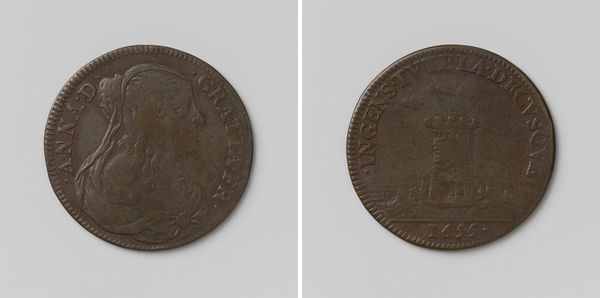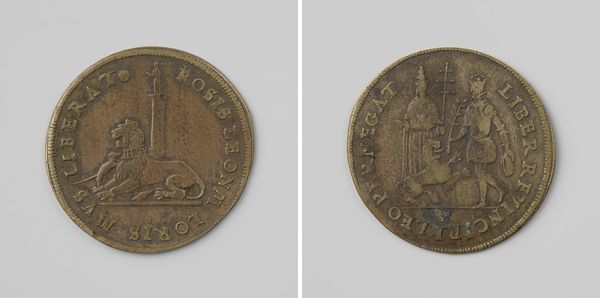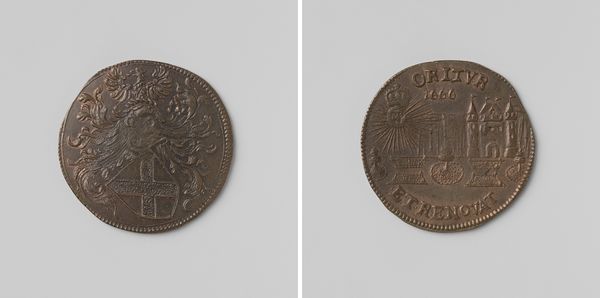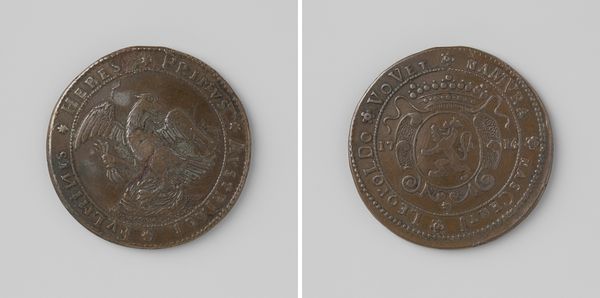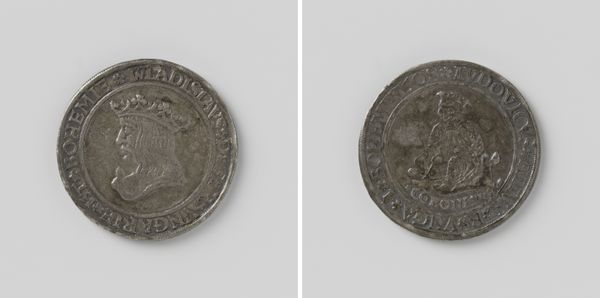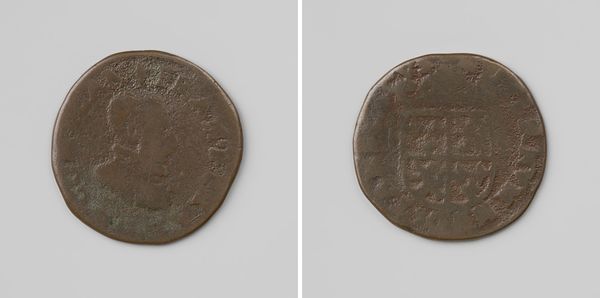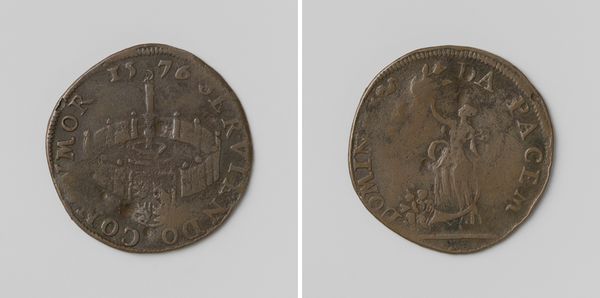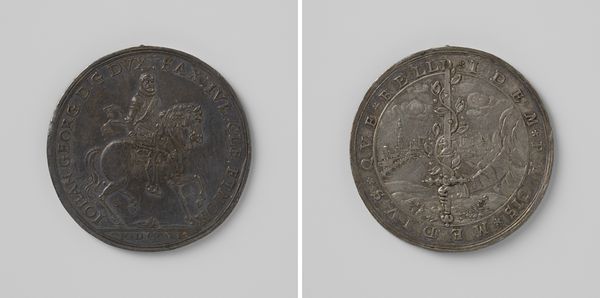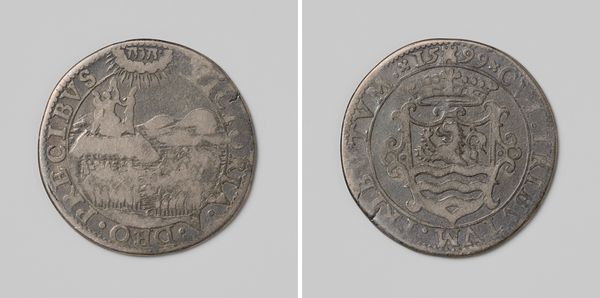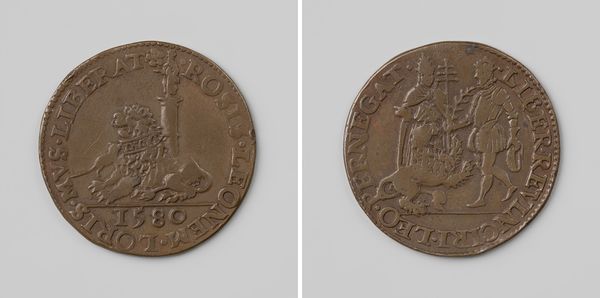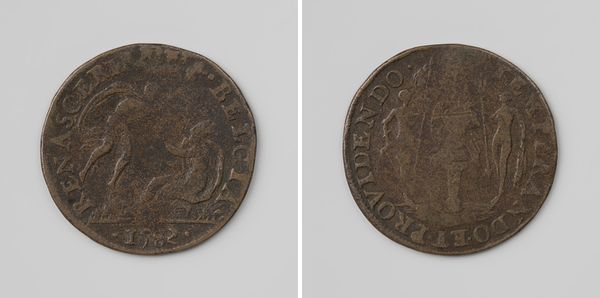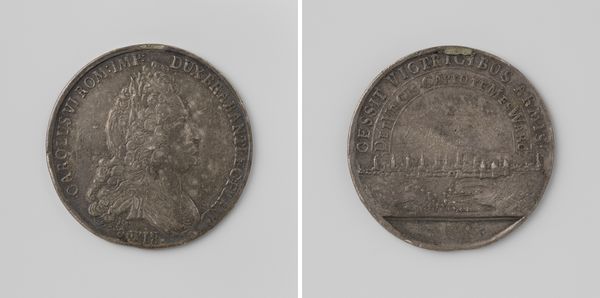
Overwinning op de Turken, rekenpenning geslagen op last van Karel II, koning van Spanje 1686
0:00
0:00
anonymous
Rijksmuseum
print, metal, relief, bronze
#
baroque
# print
#
metal
#
relief
#
bronze
#
history-painting
Dimensions: diameter 2.8 cm, weight 8.56 gr
Copyright: Rijks Museum: Open Domain
Editor: Here we have a bronze medal from 1686, titled "Overwinning op de Turken, rekenpenning geslagen op last van Karel II, koning van Spanje," which translates to "Victory over the Turks, reckoning coin struck by order of Charles II, King of Spain." Its small scale and circular format are immediately striking. What details of the composition or craftsmanship catch your eye? Curator: The formal elements are quite compelling. Notice the bipartite division of the reverse. A horizontal line rigidly separates the celestial bodies: Sol above and Luna below. This strong division invites a semiotic reading: the sun, a traditional signifier of power and dominion, and the moon, often associated with mutability or even the Ottoman Empire in this context, are presented in stark opposition. Consider also the inscription around the coin’s perimeter – does its placement and typography inform your interpretation? Editor: It does, now that you point it out. The lettering almost cages the central images, creating a sense of imposed order. The composition feels very deliberate and controlled. Curator: Precisely. And it's the deliberate nature that gives insight into the creator. Think about the symbolic value that is achieved from these simple structures and shapes. The texture and the material itself also add layers of meaning; it provides a rough yet timeless artifact representing both political strength and transience, like a ruler. Editor: So you're saying that its form— the way the sun and moon are arranged, the lettering—tells us as much about the medal’s intended message as its subject matter does? Curator: Indeed. Formal analysis allows us to move beyond merely identifying the depicted event to understanding how the artifact functions as a piece of visual rhetoric, embedding historical narratives and claims of political and philosophical ideologies. Editor: That’s fascinating. I’ll definitely pay more attention to how form and symbolism interact from now on. Curator: Indeed. Close attention to formal arrangement often reveals underlying strategies to persuade and influence.
Comments
No comments
Be the first to comment and join the conversation on the ultimate creative platform.
